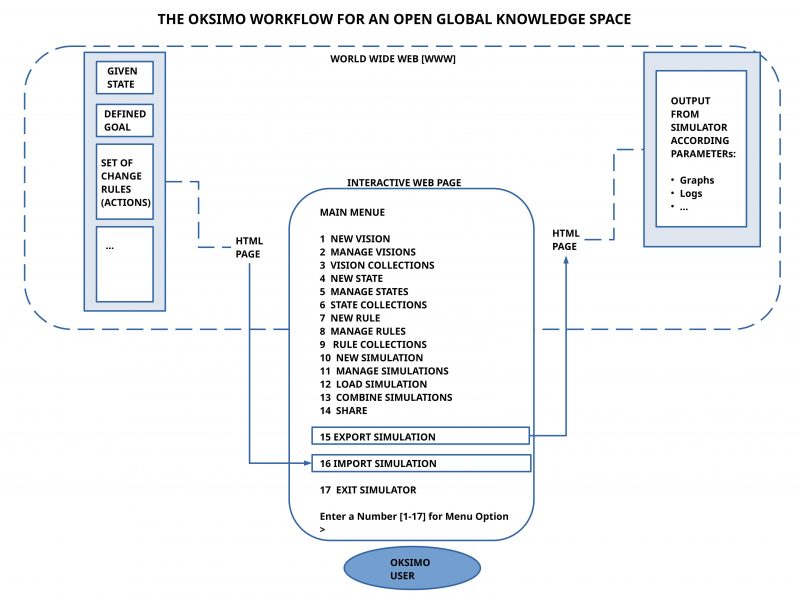eJournal: uffmm.org
ISSN 2567-6458, 1.April 2022 – 6.April 2022
Email: info@uffmm.org
Author: Gerd Doeben-Henisch
Email: gerd@doeben-henisch.de
CONTEXT
This post is part of the theme called ‘Oksimo Software Structures’ which in turn is part of the overall uffmm.org Blog.
Preface
In an earlier post the overall structure of the oksimo paradigm has been outlined. This was the perspective available during spring 2021. Since this time the theory, the software as well as the applications are evolving very quickly. A major event was the closer and closer conjunction of a general ’empirical everyday life theory’ [1] with the oksimo paradigm. The central idea is that an oksimo application is by its implicit structure a complete empirical theory in an everyday life setting. This growing clearness about the theoretical dimension of an oksimo application raises new questions how to organize an oksimo application.
Oksimo Workflow

In the first software development phase the main interest was the clarification of the concept of a theory-like environment using only everyday language (every language is possible). In the second phase this has been extended by allowing math-extensions to the everyday language accompanied by first simple graphical presentations during the simulation. Oksimo can be used here in single mode as well as in multiple user mode allowing an exchange of data as well as a ‘unification’ of different simulations
This is quite powerful.
But at this point the oksimo paradigm looks a bit like an ‘Island’: living there is OK, but there is not yet some ‘normal exchange’ possible.
Looking back in history Tim Berners-Lee [2] has during his life-time developed the idea of an open space of knowledge and communication embedded in a space called World Wide Wed [WWW]. Despite all the many details there one can see one central idea: an open space of addresses each representing a web-page, which can be a html-page. Thus the WWW can be understood as an universal ‘interface’ between people exchanging knowledge in the format of HTML-pages. And because an HTML-page follows a clearly defined pattern everybody can read and write such html-pages with simple readers and writers.
While the oksimo software itself is for a user available through an interactive web-page and it’s outputs can already be shown on a web-page it is not a too big step to extend the oksimo software generally with an export-function of a simulation as a complete html-page and as well with an import-function read an html-page which contains a complete simulation as a text which then is ‘converted’ in states, goals and rules which are needed for the simulator.
Thus without changing the software as it is now one could make the oksimo software with these additional functions immediately speaking to the whole World Wide Web.
By this step every user in the world wide web could edit a simulation with a normal editor, post this on a server of personal choice for everybody and vice versa every user could read everywhere html-pages with simulations, download them and modify or extend these in the light of his experience. This would enable a new kind of wikipedia-like servers. In this sense the oksimo paradigm could perhaps become the new operating system for the whole knowledge space.[3]
COMMENTS
[1] See the post “POPPER and EMPIRICAL THEORY. A conceptual Experiment” which gives a complete outline of the idea of an empirical everyday life theory.
[2] Tim Berners-Lee, Weaving the Web. The original design and ultimate destiny of the world wide web, HarperCollins Publishers, New York, 1999
[3] This can remind us a bit to the wonderful vision of ‘Collective Intelligence’ described by Pierre Lévy.
